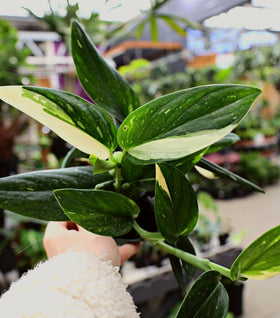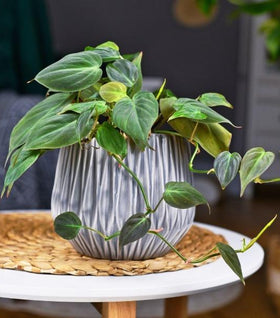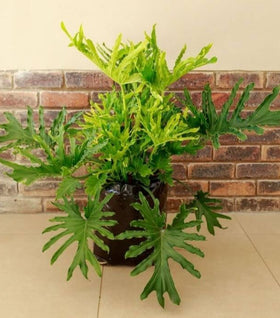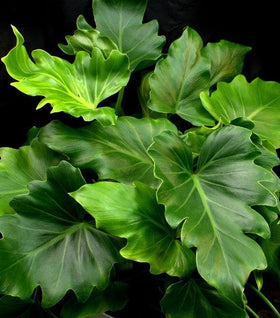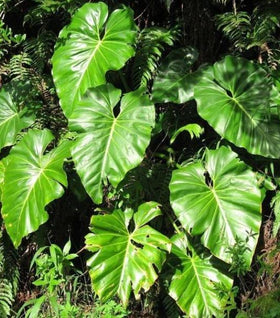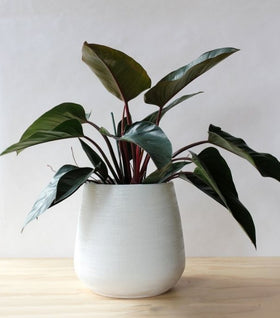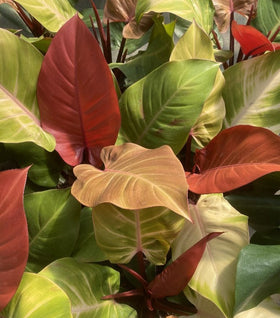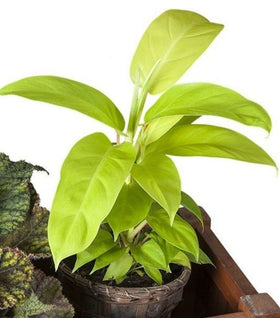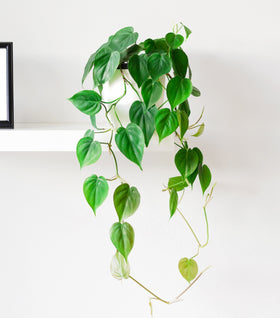Philodendron Plants For Sale Online
Philodendrons are a classic and easy-care house plant because they are do not require a lot of attention. The philodendron plant family is very diverse; there are vining, climbing, Split-leaved, and dwarf philodendron varieties. Philodendrons are one of the most popular houseplants grown today because they are easy to grow and most of the types available today adapt well to average household conditions.
Many of the well-known philodendrons are vines that are perfect for climbing on a totem or up a trellis. They can also be grown in hanging baskets, allowing the heart-shaped foliage to hang down, creating a cascading effect. Philodendrons are counted as some of the easiest to grow indoor plants of all time. Upright-growing and clumping Philodendron varieties are just as easy to grow but typically have larger leaves.
Types of Philodendron:
There are two main types of Philodendrons, climbing varieties, and upright varieties. Both beautiful and unique in their own ways, the variety of and beauty that these plants offer never cease to amaze us.
Climbing Philodendron plants scale vertical surfaces as they grow towards the sun. Their vining growth habit stems from their tropical origin. In their growth in the wild, Philodendron would climb trees to better suit their light and moisture needs.
Indoor Climbing Philodendron can be trained to grow up a moss pole or trellis. Climbing types can also be grown in a hanging basket to create a trailing plant. Both of these plants resemble Pothos plants but are members of a different genus of plants altogether.
Monstera Adansonii or swiss cheese vine is sometimes also mistakenly included in the climbing philodendron family as well. But once again, the Swiss Cheese plant is classified in a different genus. Some popular vining philodendron would include the classic Heartleaf Philodendron along with the Micans and Brasil varieties.
Upright philodendrons grow upward or in clumps but at a much slower pace than their hanging counterparts. Upright varieties typically have much larger leaves than the climbing philodendron varieties.
The upright Philodendron family makes up the majority of the cultivar. Included in this category includes the popular split-leaf philodendron, which some classify as a Monstera. Another popular upright cultivar is the Tree Philodendron. There are many different clumping or upright philodendrons, and the colors and sizes are almost endless.
How To Grow Philodendron Plants
Light: The ideal care for a Philodendron houseplant would incorporate a bright indirect light. However, while tropical plants prefer bright light, they are highly adaptable to many conditions. Your Philodendron plant will grow in a medium to lower indirect sun as well.
Select a position near a window where the sun's direct rays never actually touch the foliage. If you notice several of the older leaves turning yellow, your plant may be getting too much direct sunlight. On the other hand, if the plant's stems become long and leggy, the plant probably isn't getting enough light. Once you find the perfect position for the plant, each of these two conditions will quickly fix itself.
Water: Philodendron enjoys having moist soils, but not being drenched constantly. When growing philodendron plants in the home or office, allow the top 2 inches of soil to dry out between waterings. Inserting your index finger to the first knuckle into the soil is best to check the moisture level.
Wilting leaves can mean that the plant is getting too much or not enough water. Try to adjust your watering schedule either way, and the leaves recover quickly when you correct the watering schedule. Plant your tropical indoor plant into a pot with drainage holes to avoid issues of root rot.
Fertilizer: It's best to fertilize philodendron houseplants with a balanced liquid houseplant such as Jack's Classic Houseplant Special Fertilizer. Water the plant with the fertilizer monthly in the spring and summer months. Slow growth and small leaf size are the plant's way of telling you that it isn't getting enough food.
Soil: We recommend that you use a potting mix that is well-draining and high in organic matter. The Garden Goods Direct Team recommends creating a mixture of 50% Espoma Organic Potting mix with 50% Espoma Organic Cactus mix. The cactus soil has larger particle sizes that allow for better drainage.
Frequently Asked Questions About Philodendrons
Are Philodendrons Air-purifying Houseplants?
Philodendrons have been shown to improve indoor air quality. Through their aerial roots and broad leaves, these plants act as an air filter. They help to both remove pollutants from the air and release clean oxygen. The larger-leaved plants of this genus are among the most effective plants for reducing indoor air pollution.
Are Philodendrons Safe for Children and Pets?
Philodendrons are common house plants in the United States. Unfortunately, all types of philodendrons are toxic to most animals, including humans. While not deadly, ingestion of the plant can cause discomfort and swelling of the mouth and digestive tract.


